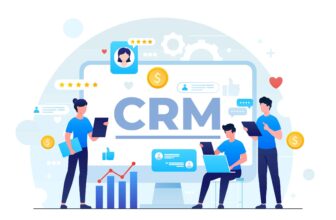
Businesses and organizations can greatly benefit from the use of asset management system. Initially, it aids in the organization of their valuable possessions, such as machinery and equipment. Second, it offers comprehensive details about every asset, such as its location, state, and maintenance background. It also lessens the likelihood of theft or loss and guarantees that assets are used effectively. Now, let’s get started and discover more about asset management systems, including their functions, significance, and definition.
Understanding Asset Management Systems
An asset management system keeps track of things that a business owns and uses. These things are called assets. They can be anything from computers and trucks to software and tools. Additionally, the main goal of an asset management system is to make sure these things are used properly, taken care of, and replaced when needed.
Types of Assets
Assets come in different types. First, there are physical assets, which are things you can touch, like buildings, machines, vehicles, and equipment. Second, digital assets are things you can’t touch, like software, digital files, and ideas. Finally, human assets are people and their skills and knowledge. Knowing the different types of assets helps us manage them better.
Parts of an Asset Management System
A good asset management software has several important parts. Let’s look at some of them. Each part, therefore, plays a crucial role in keeping track of assets efficiently. Consequently, it ensures smooth operation and better organization.
Inventory Management
Inventory management is like keeping a detailed list of all the things a business owns. This list includes information like where the item is, what condition it’s in, and how it’s used. By keeping track of inventory, businesses can avoid losing things and make sure they have what they need to get the job done.
Maintenance Management
Regular maintenance, or taking care of things, is very important. Maintenance management involves planning and keeping track of maintenance activities. This helps prevent things from breaking down and reduces repair costs. As a result, it saves money and keeps everything running smoothly.
Asset Tracking
Asset tracking uses technology like barcodes, RFID tags (like those beeping stickers on store items), and GPS to keep an eye on where things are and what shape they’re in. This is especially useful for big companies with lots of things in different places. Additionally, it makes it easier to find and manage these assets.
Lifecycle Management
From the moment an item is brought to the moment it is no longer needed, lifecycle management keeps track of it. It entails arranging for the purchase, usage, maintenance, and replacement of the object across its whole life. It guarantees effective asset management throughout their lifecycle.
Benefits of an Asset Management System
Using an asset management system has many benefits. Here are some of the most important ones. These benefits help businesses in various ways.
Better Efficiency
By tracking and managing things well, businesses can work more efficiently. This means less time spent looking for things and more time spent doing important work. Consequently, it boosts productivity and saves time.
Cost Savings
Taking good care of things and using them wisely saves money. Businesses can avoid expensive repairs and replacements by being proactive. Additionally, it reduces unnecessary spending and maximizes the value of assets.
Smarter Decisions
With detailed information about their stuff, businesses can make better decisions. This includes deciding when to replace or upgrade things and how to use resources effectively. Furthermore, it helps in planning and budgeting.
Following Rules
Many industries have rules about how to manage assets. An asset management system helps businesses follow these rules by keeping accurate records and ensuring proper maintenance. Therefore, it helps in complying with regulations and standards.
How Asset Management Systems Work
Asset management software works by combining various tools and processes. Here’s a step-by-step look at how they function. Consequently, each step is crucial for effective asset management. Additionally, this ensures that the system operates smoothly and efficiently. Furthermore, these steps help in maintaining accurate records and improving overall productivity.
Collecting Data
First, people collect information about all the things a business owns. This includes details like what the item is, where it is, its condition, and how it’s used. Businesses often collect this information using barcodes, RFID tags, or manual entry. Additionally, accurate data collection is essential for effective management.
Storing Data
Next, the collected information goes into a central database. Authorized people can access this database to update or retrieve information. Moreover, a centralized system ensures that everyone has the information they need.
Monitoring and Tracking
People continuously monitor and track things. This involves regular updates on the item’s status, location, and condition. Technology like GPS and RFID tags are very helpful in this step. Consequently, it ensures that assets are always accounted for.
Scheduling Maintenance
Businesses plan maintenance activities based on the item’s condition and usage. This ensures that things are taken care of regularly, reducing the risk of unexpected breakdowns. Additionally, it extends the lifespan of assets and keeps them in good working order.
Reporting and Analyzing
Finally, the system creates reports and looks at the data. This helps businesses understand how well their things are performing, identify trends, and make informed decisions. Furthermore, it provides valuable insights for continuous improvement.
Choosing the Right Asset Management System
Picking the right asset management system is very important. Here are some factors to consider. Each factor plays a key role in selecting the best system.
Can It Grow?
Choose a system that can grow with your business. It should be able to handle more items and users as your business grows without slowing down. Therefore, scalability is crucial for long-term success.
Easy to Use
A system with an easy-to-use interface ensures that employees can use it without much trouble. Consequently, this reduces training time and increases overall efficiency. Additionally, user-friendly systems lead to better adoption and usage.
Can It Work with Other Software?
The system should work well with other software your business uses. This includes accounting software, ERP systems, and maintenance management systems. Consequently, integration capabilities are essential for seamless operations.
Support and Training
Make sure the company selling the system offers good support and training. This helps in smooth implementation and addresses any issues that may come up. Furthermore, proper support ensures that the system runs smoothly and effectively.
Implementing an Asset Management System
Setting up an asset management system involves several steps. Here’s a brief overview. Each step is important for successful implementation.
Assess Your Needs
Start by figuring out what your business needs. Identify the types of things you have and the challenges you face in managing them. Additionally, understanding your needs helps in selecting the right system.
Choose a System
Based on your needs, select an asset management software that meets your requirements. Consider factors like scalability, ease of use, and integration capabilities. Therefore, choosing the right system is crucial for success.
Train Your Team
Provide training to your team on how to use the system. This ensures that everyone knows how to use the system’s features and can use it effectively. Furthermore, proper training leads to better usage and efficiency.
Move Your Data
Move existing information into the new system. This includes details about all items, their locations, conditions, and usage histories. Consequently, data migration is essential for continuity and accuracy.
Monitor and Improve
After setting up the system, keep an eye on how well it’s working. Make improvements as needed to ensure it meets your business’s changing needs. Additionally, continuous monitoring ensures that the system remains effective and efficient.
Conclusion
Lastly, in conclusion, asset management software is a valuable tool for businesses of all sizes. It helps track, manage, and take care of things efficiently. By improving how businesses work, saving money, and helping make better decisions, an asset management system can significantly contribute to a business’s success. Therefore, choose the right system, set it up well, and enjoy the benefits of better asset management.







